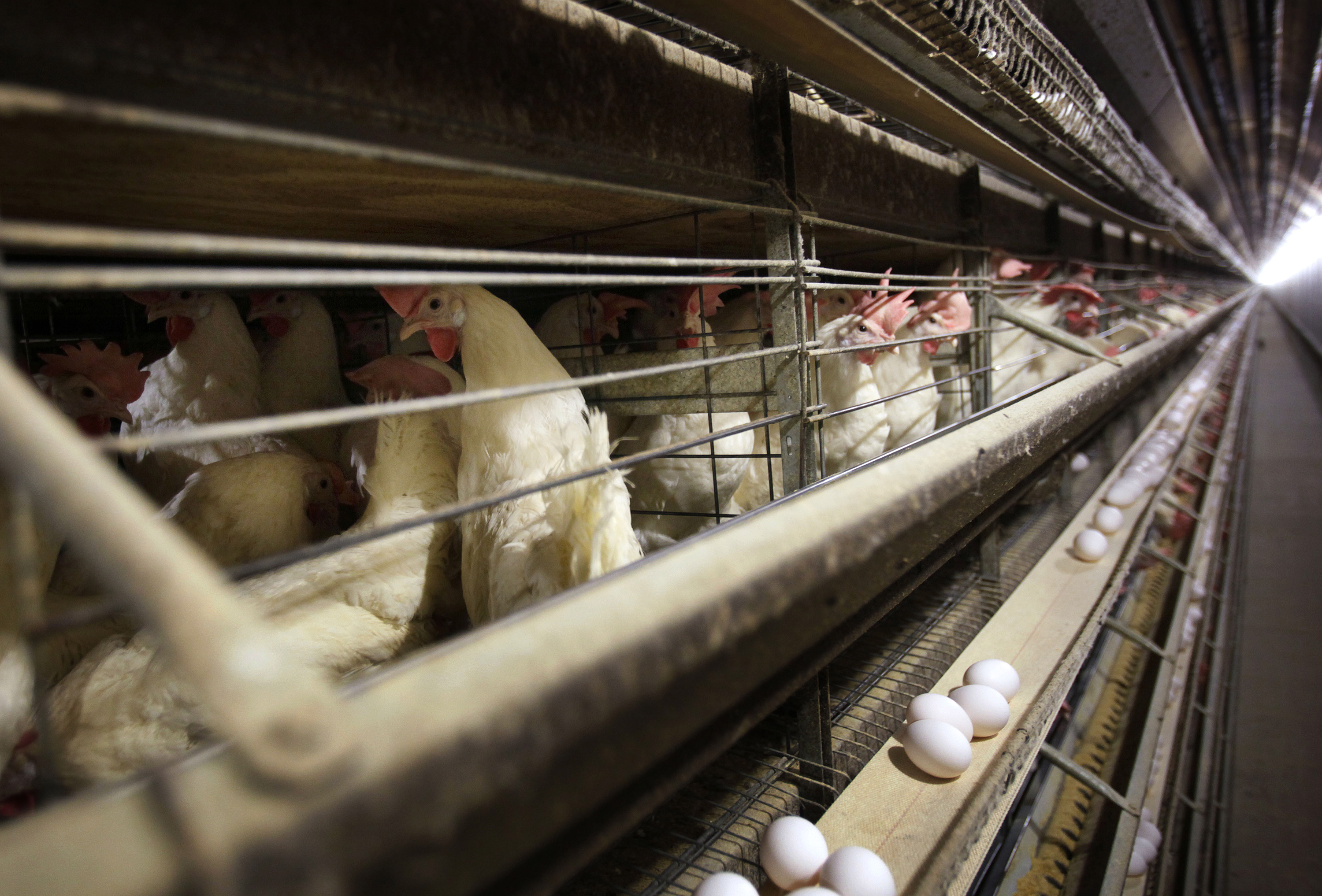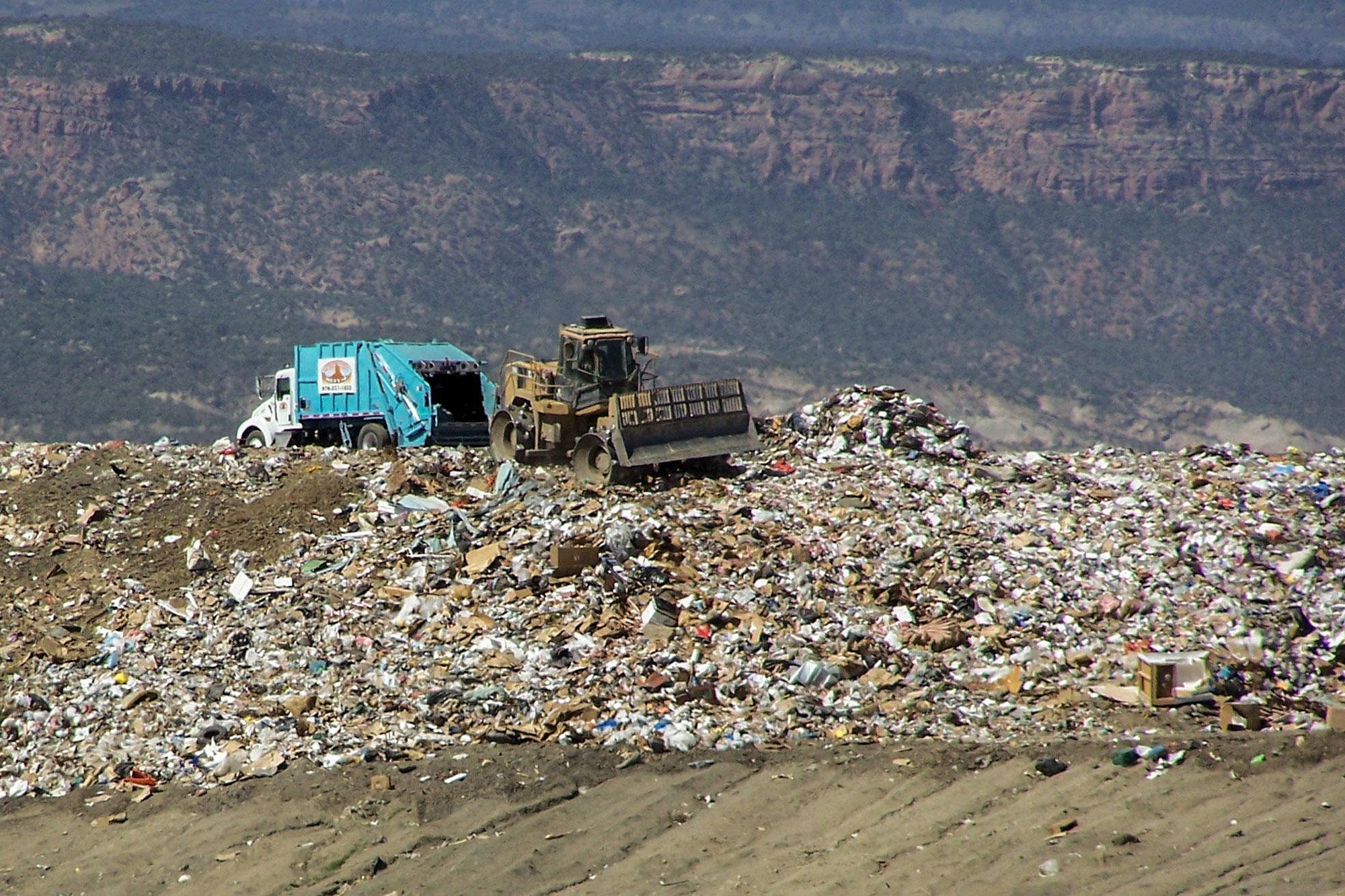
Colorado is leading the nation in human cases of the H5 bird flu and millions of poultry in the state have been killed to stop the threat of the virus. It also has hit dairy cows in the state.
What does this mean for the general public? What about all the county and state fairs that show off chicken and cows?
What exactly is bird flu?
Avian influenza, also called H5 bird flu or H5N1, is a highly pathogenic avian influenza. It’s widespread in wild birds around the globe. It’s responsible for outbreaks in poultry and dairy cows in Colorado and the U.S., with double digit recent human cases in agricultural workers.
The virus is found in an infected bird’s poop and fluids from the bird’s mouth, eyes and nose, according to the CDC.
It can cause severe respiratory symptoms.
What is the risk to people?
The viruses don’t usually infect people, according to the CDC, but can happen if you come into contact with an infected bird, dead or alive and touch your eyes, nose or mouth, touch surfaces or handles item contaminated and tough your eyes, nose or mouth, or breath virus-contaminated dust or droplets.
If you get sick from it, symptoms range from none to severe illness. Mild symptoms include conjunctivitis (red eye), cough, sore throat, runny or stuffy nose, muscle or body aches, headaches and tiredness. Among more serious symptoms are high fever, shortness of breath and difficulty breathing. Severe illness can result in pneumonia that may require hospitalization and can lead to death, though that’s only to date happened in other countries, not the U.S.
Most at risk are people working with infected poultry, waterfowl, including ducks and geese and livestock.
Can I get H5 bird flu from eating dairy, chicken or eggs?
It is safe to eat properly handled and cooked poultry products, according to the Colorado Department of Public Health and Environment (CDPHE). The proper handling and cooking of poultry, meat, and eggs kills bacteria and viruses, including bird flu viruses.
People should separate raw poultry from cooked foods and foods that won't be cooked.
“We (the state health department) and CDC believe that the risk continues to be low here for the general public,” said Dr. Rachel Herlihy, the state epidemiologist with CDPHE.
Many experts and health agencies advise against consuming raw milk. “Always choose pasteurized milk and dairy products to protect your health and the health of your family,” the CDC wrote on its web page regarding raw, or unpasteurized, milk.
The CDC suggests health care providers tell patients raw milk and any products made from it, including cheese, ice cream, and yogurt “can be contaminated with germs that can cause serious illness, hospitalization, or death.”
The risk to the general public is low, so should I be worried?
The more virus out in farms or the wild, the greater the chance it will infect other animals, including humans. Also, more infections means a greater possibility that virus could mutate into a much more serious threat, one that could cause a pandemic.
“H5N1 registers as what we call ‘a virus with pandemic potential,’” according to the Johns Hopkins Bloomberg School of Public Health. Unlike other flu viruses, humans have no preexisting immunity to H5 viruses. “Therefore, similar to what we saw with COVID, in the worst case scenario, if this virus enters humans and starts to spread, all of us are susceptible, and we could see massive increases in numbers of cases.”
May Chu, an epidemiologist and clinical professor from the Colorado School of Public Health, said that’s one key reason infected poultry are culled: to limit rapid spread through a flock that could then be transmitted to humans.
“You can nip it before it gets into the human population widely,” she said. “That is the best public health protection.”
But what about people who work on dairy farms or in egg-laying facilities?
The state health department cited the CDC and said that people who work on those farms are at higher risk of being exposed to H5 bird flu.
And that is showing up in Colorado.
As of Thursday, the state health department said it has recorded a total of 10 cases; six at one poultry operation and three at another. That’s in addition to the case of a dairy worker earlier this month, the state’s first case this year.
“The risk to the general public is still low. We are only seeing this in workers with direct contact with these animals,” said Scott Bookman, senior director for Public Health Readiness and Response with the CDPHE.
People who are in close contact with dairy and egg-laying facility workers who tested positive are being monitored as well, said Herlihy.
“We want to know if there is any illness among household contacts,” Herlihy said. “That would obviously be a concerning scenario. So the folks that have closest contact with an ill worker would be our highest priority, and that has not been identified to date.”
Herlihy said there has been no sign of the virus spreading via human-to-human transmission.
“We've been tracking this virus since 2022, and during that time we have not seen evidence of person-to-person transmission,” she said.“We know that there's going to be increased exposure in certain industries, including the poultry industry and on dairy farms right now.”
“We also have had behavioral health services out there, not only working with our teams, but working with the workers out on site to ensure that if folks are struggling, that we've got people out there they can talk with,” said the agency’s Bookman. “We also have our Agricultural Workers service program that has been out the last couple of days as well.”
Colorado is providing up to four weeks of free PPE (personal protective equipment) to farmworkers, according to its website. There it also offers updated situation reports, links to a webinar via YouTube. A link for poultry owners, veterinarians and backyard, hobby and commercial products to report, in English or Spanish, information about sick or dead animals.
Similar resources are also available on the state’s website for HPAI in dairy cattle. That includes information about the state order regarding licensed dairy cow farms in the state to submit weekly milk samples for testing. Farmworkers can also order free PPE from the site.
Workers are also getting information, testing and monitoring from health providers visiting the facilities via mobile clinics. “We outreach to seasonal workers, migrant workers, and other workers that may have a hard time, because of their work schedules, to come in,” said Dr. Mark Wallace of Chief Clinical Officer for Sunrise Community Health.
I’m going to my county or the state fair, do I need to be worried?
While your risk of coming into contact with a sick animal at the fair is low, there are things you can do to protect yourself.
“For the general public, what I would say to anybody at all times is wash your hands. Don't touch your mouth, don't put your hands on your face. Things like that,” Scott Bookman said.
For animals, the state veterinarian’s office did put out guidance for poultry and dairy cows that recommended monitoring animals for signs of illness. The office said if you are bringing lactating dairy cattle to a show or event of some kind, that they should be tested within seven days of arrival.
“We know that there's no such thing as no risk,” Baldwin said. “What we're trying to get to is low risk. And so testing within that seven day timeframe will help us be assured that at that time of that test, that cow was not shedding virus. So I think we are putting that in place and we're asking show and fair and event organizers to implement that guidance and require testing for those lactating dairy cattle going to fairs.”
As for poultry, the state won’t require testing because poultry show obvious signs of illness when infected with H5 bird flu.
“All of the animals, when they get to the fairgrounds, are inspected,” said Baldwin, the state veterinarian. “So we've got teams from CSU, the CSU avian health diagnostic team that goes out and they do at a number of the fairs across the state, they'll do inspections at check-in for all of the poultry coming to those events.”
Some veterinarians and agricultural experts nationally are recommending farmers not bringing lactating cows to fairs “Given the high risk posed by lactating dairy cattle to other cattle, the rest of the exhibition community, and the public, lactating dairy cattle should not attend exhibitions including county and state fairs, at this time,” according to a paper published by the University of Minnesota Extension and its College of Veterinary Medicine.
Can my pets get H5 bird flu?
The risk to domestic animals is lower than in birds, but cats or dogs could become infected. That can happen when they go outside and eat or are exposed to sick or dead birds infected with bird flu viruses. That risk extends to an environment contaminated with infected bird feces.
People should keep their pets away from wild birds and from areas contaminated with the virus.
If you suspect your pet may have been exposed to H5 bird flu, and is showing symptoms of illness, contact your veterinarian and monitor yourself for symptoms.
If I work on a farm, how do I protect myself?
Farm workers can protect themselves by wearing protective clothing — like coveralls, gloves, face masks or shields, and goggles — when working with sick or dead animals, manure, or milk, according to the state’s website. The state also suggests washing hands with soap and water throughout the day, especially before eating, drinking or smoking, and before going home. They recommend cleaning areas that have come in contact with animals, manure or milk and using chemical disinfectants effective against viruses.
If you work animals suspected or confirmed to have H5 bird flu and you start to feel sick, call CDPHE at 303-692-2700 (after normal business hours: 303-370-9395). The Department can help you get a flu test and medicine if you need it.
If you have questions about sick or dead animals on the farm, ask your farm manager and veterinarian.
The CDC sent a team to Colorado. Are they still here?
While most of the original deployment team has left the state as of Tuesday, July 30, Colorado continues to have smaller numbers of CDC staff deployed to assist with the state response, according to the state health department.
How did H5 bird flu start?
The bird flu has been circulating in the migratory bird populations for the last two and a half years. Colorado State Veterinarian Maggie Baldwin said it has historically impacted the state’s poultry operations.
“We have seen peaks and valleys of incursions because the virus has come in with migratory birds and typically leaves with migratory birds,” Baldwin said.
How does H5 bird flu affect birds?
The mortality rates for birds that are infected are between 90 percent and 100 percent. That’s what highly pathogenic avian influenza means: it kills a lot of birds.
“They get sick very quickly and die very quickly,” said Colorado Veterinarian Baldwin. For the last two and a half years, we've had single spillover events from wild birds that have been spilling over this virus into our poultry flocks. And what changed significantly is that jump into dairy cattle earlier this year.”
Because the virus spreads so widely in birds and can spread to humans, infected poultry flocks, like those in commercial egg operation, are culled or put down.
H5 bird flu was first detected among Colorado cattle in April. Since then, nearly 50 percent of Colorado herds have tested positive for the virus. What is going on?
Colorado has what the state vet calls “sustained virus” in dairy herds, meaning it’s continually present. It was actually the dairy cows that infected poultry in the state, Baldwin said.
“We've had three spillover events into three large commercial flocks. Two of those are confirmed that they are the dairy strain. We're waiting on whole genome sequencing on the last one, but that has impacted three commercial poultry flocks,” Baldwin said. “And so this virus right now is not only challenging and putting strain on our dairy industry, but this spillover from dairy to our poultry industry is what is posing a really significant risk.”
Colorado has begun mandatory testing of all cattle in the state to help control the spread of the virus among herds.
What is the mandatory testing the state implemented in herds going to tell us?
The Colorado Department of Agriculture and CDPHE announced July 23 that they are now requiring dairy farmers to submit weekly samples for testing. Colorado is the first state in the U.S. to implement a testing requirement.
The testing is to get a better handle on how widespread the virus is among cattle.
“Our goal in implementing the mandatory testing order for the dairies statewide is really to identify what that reservoir of disease is” Baldwin said
Baldwin said that their current process is to place herds that test positive for the virus in quarantine, then work with cattle owners to “implement really strong biosecurity measures to try and prevent further spillover from that herd.”
The state is tracking testing on its website.
Cows bred for meat do not need to be tested, as H5 bird flu cases have only been confirmed among dairy cattle.
What happens with infected milk that has tested positive? Is it disposed of or pasteurized later?
Abnormal milk and milk from sick cows is disposed of onsite, according to a spokesperson with the CDPHE. According to the agency, onsite disposal is the safest and most convenient process to ensure there is no further contamination from the virus. If a dairy has the ability to heat treat discarded milk, CDPHE recommends doing that before disposing of it down the drain. In all cases, discarded milk should be disposed of in the farm's sanitary sewer with other on farm liquid wastes, the agency said.
Dairies are required to send only milk from healthy animals into processing for human consumption. Pasteurization eliminates potentially harmful bacteria and viruses, according to the FDA.
Back to the poultry problems, what’s happening there?
It all started pretty recently, with three flocks needing to be culled in Welc County — the first one was confirmed positive for the virus on July 8. The second one was confirmed on July 16 and the third on July 19.
State Veterinarian Baldwin said about 3 million laying hens were killed (or “depopulated” as Baldwin called it). It was more than half of the state’s total inventory of laying hens, she said. There were 5.2 million egg-producing hens in Colorado two years ago. She said two of the facilities where flocks were culled were egg laying operations.
“They were, I believe, our two largest egg laying facilities in the state. And the third one was a commercial pullet facility. Pullets are the baby birds before they become laying hens.” Baldwin said.
What happens to the farms and facilities that have to kill their flocks?
There is compensation and USDA has a program in place. Gov. Jared Polis declared a disaster emergency after the first outbreak was detected at a large commercial egg operation in Weld County. That freed up state resources to help agriculture officials and farmers respond to the situation.
“So they are provided indemnity for the lost birds as well as the lost eggs at that facility. And they're also provided compensation for all of the activities associated with response to the disease,” said Baldwin.
What about infected birds? How are they disposed of after culling?
The decision for disposal in what the state calls a "mass mortality event" is made jointly between USDA, the Colorado Department of Agriculture, the producer, and CDPHE or other local authorities. It is typically a combination of multiple disposal methods that commonly include burial and composting, which follows a very strict and lengthy process to ensure proper decomposition and virus elimination, according to the agency.
We know about virus evolution and mutations from the COVID-19 pandemic — how will this virus mutate over time?
No one knows, but if the COVID-19 pandemic has taught anything, it’s that viruses can spread widely, around the world, like wildfire and that protective measures can help greatly avoid the worst.









